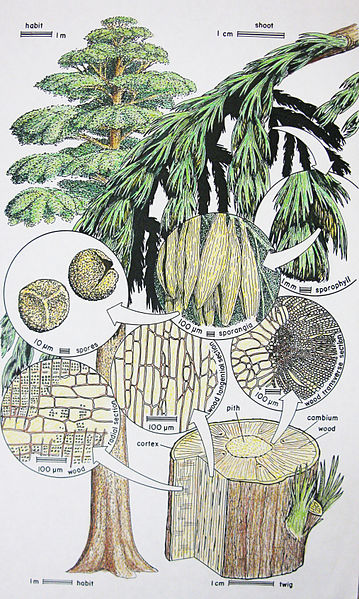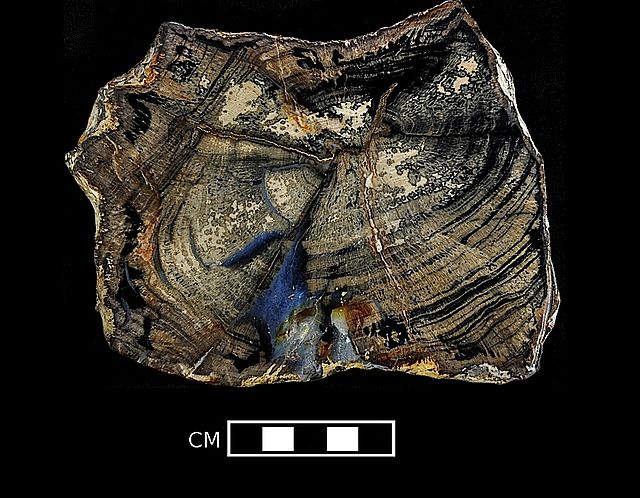Archaeopteris is an extinct genus of progymnosperm tree with fern-like leaves. A useful index fossil, this tree is found in strata dating from the Upper Devonian to Lower Carboniferous, the oldest fossils being 385 million years old, and had global distribution.
Archaeopteris
A reconstruction of Archaeopteris macilenta from the Late Devonian, Walton Formation of Hancock, New York
A polished round of permineralised wood of Callixylon whiteanum from the Late Devonian Woodford Shale of Ada, Oklahoma
A. halliana
The progymnosperms are an extinct group of woody, spore-bearing plants that is presumed to have evolved from the trimerophytes, and eventually gave rise to the gymnosperms, ancestral to acrogymnosperms and angiosperms. They have been treated formally at the rank of division Progymnospermophyta or class Progymnospermopsida. The stratigraphically oldest known examples belong to the Middle Devonian order the Aneurophytales, with forms such as Protopteridium, in which the vegetative organs consisted of relatively loose clusters of axes. Tetraxylopteris is another example of a genus lacking leaves. In more advanced aneurophytaleans such as Aneurophyton these vegetative organs started to look rather more like fronds, and eventually during Late Devonian times the aneurophytaleans are presumed to have given rise to the pteridosperm order, the Lyginopteridales. In Late Devonian times, another group of progymnosperms gave rise to the first really large trees known as Archaeopteris. The latest surviving group of progymnosperms is the Noeggerathiales, which persisted until the end of the Permian.

Progymnosperm





